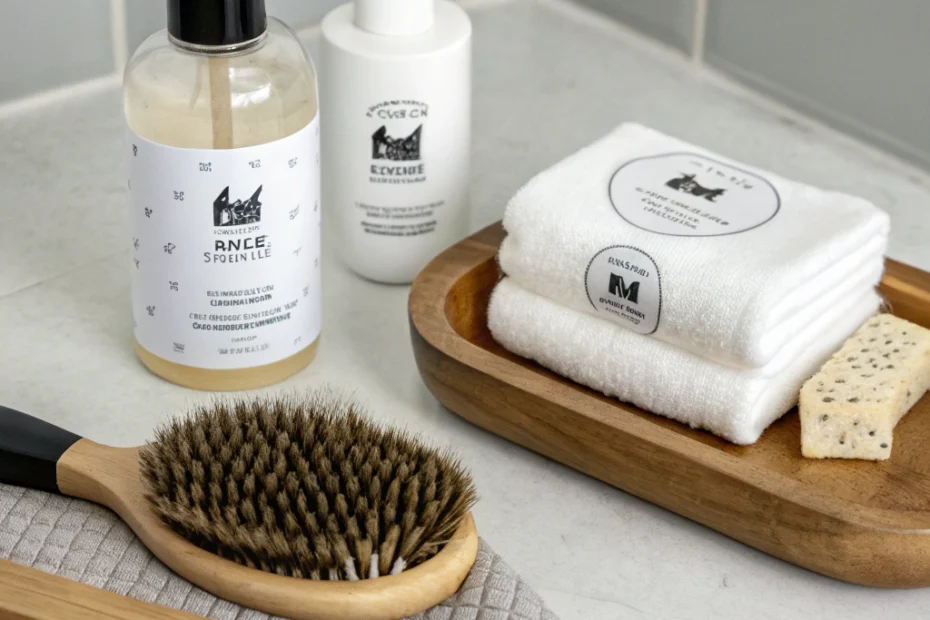At-a-Glance
Keeping your beloved feline friend off your cherished furniture can be a challenge. Cats are naturally curious and love to explore, often finding your couch or bed the perfect spot for a nap. However, with some strategic planning and the right tools, you can gently encourage your cat to choose other areas for lounging. This guide will walk you through various methods and considerations to help you maintain a harmonious home environment.
How to Choose
When deciding on methods to keep your cat off furniture, consider your cat’s personality and preferences. Some cats respond well to positive reinforcement, while others may need a more structured approach. Here are a few factors to consider:
- Cat Furniture: Providing alternative options like cat trees or scratching posts can redirect your cat’s attention.
- Behavioral Traits: Observe your cat’s habits. Does your cat prefer high places, or is it more interested in scratching?
- Space Availability: Ensure you have enough space to accommodate additional cat furniture.
- Material Preferences: Some cats are drawn to certain textures, so choose materials that are less appealing for your furniture.
Safety & Setup
Setting up your home to deter cats from furniture involves ensuring safety and comfort. Here are some tips:
- Secure Furniture: Ensure that any new cat furniture is stable and secure to prevent accidents.
- Non-Toxic Deterrents: Use cat-safe sprays or tapes that are commonly used to deter cats without causing harm.
- Comfortable Alternatives: Make sure alternative options like cat beds or mats are cozy and inviting.
- Gradual Introduction: Introduce new furniture gradually to avoid overwhelming your cat.
Core Pillars
Understanding the core pillars of cat behavior can support your efforts in keeping them off your furniture:
Instinctual Needs
Cats have natural instincts to climb, scratch, and explore. Providing outlets for these behaviors can reduce their interest in your furniture.
Environmental Enrichment
Enriching your cat’s environment with toys, climbing structures, and interactive playtime can keep them engaged and less likely to seek out your furniture.
Consistency
Consistency in your approach is key. Reinforce positive behavior regularly and avoid mixed signals that may confuse your cat.
Placement & Environment Tips
The placement of your cat’s furniture and the overall environment play a crucial role in their behavior:
- Strategic Placement: Place cat furniture near windows or in areas where your cat likes to spend time.
- Quiet Zones: Create quiet, secluded areas for your cat to retreat to, reducing their need to seek out your furniture.
- Interactive Spaces: Incorporate interactive elements like toys or puzzle feeders to keep your cat entertained.
Comparison with Alternatives
There are several alternatives to keeping cats off furniture, each with its own benefits and considerations:
Cat Furniture
Cat trees and scratching posts are commonly used to provide cats with their own space. They can be effective if placed correctly and made appealing to your cat.
Deterrent Sprays
These sprays can be applied to furniture to make them less appealing to cats. Ensure they are non-toxic and safe for pets.
Training and Behavior Modification
Training your cat with positive reinforcement can gradually change their behavior. This method requires patience and consistency.
FAQs
Q: Can I train my cat to stay off furniture?
A: Yes, with patience and consistency, you can train your cat using positive reinforcement techniques.
Q: Are there any risks with using deterrent sprays?
A: Always choose non-toxic, pet-safe sprays to avoid any health risks to your cat.
Q: How long does it take to see results?
A: The time can vary depending on your cat’s personality and the methods used. Consistency is key.
What to Do Next
Now that you have a better understanding of how to keep your cat off furniture, consider evaluating your home environment and your cat’s needs. Implement the strategies that best suit your situation and observe how your cat responds. Remember, each cat is unique, and what works for one may not work for another. Stay patient and flexible in your approach.
Disclaimer: Always consult your veterinarian for personalized advice regarding your cat’s health.
